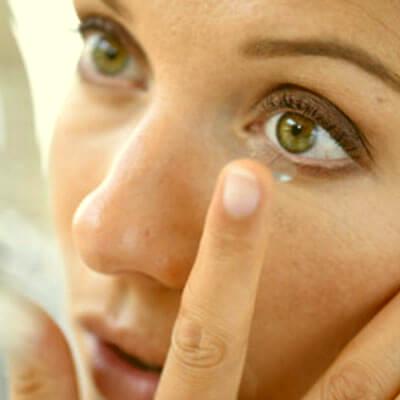Contact lenses are small, transparent eye- shaped lenses which float in the tear film on top of the cornea, tucking under the eyelids when we blink.
There are two main types of contact lenses: ‘rigid’ lenses are made of more ‘gas permeable’ materials, and ‘soft’ lenses which can best be described as being made of a jelly- like material.
In recent years, Night Lenses have become very popular – helping to control Myopia, and you wear them while you sleep. Click here for more information
As the cornea does not have a blood supply, it relies on oxygen from the atmosphere dissolving in the tears, which is then absorbed into the cornea to keep it transparent and healthy. Any contact lens must ensure this process continues uninterrupted to maintain clear and healthy eyes. Rigid Lenses are made in a variety of materials which allow oxygen from the atmosphere to pass through the lens to the cornea underneath.
Some people with high prescriptions, and those with keratoconus (a condition of the cornea which makes it steepen unevenly) may find rigid lenses give sharper vision overall. Rigid lenses are also used in orthokeratology, where contact lenses are worn during sleep to gently re- shape the cornea and give clear, spectacle and contact lens free vision during the next day! This can be useful for some sportsmen and women who are distracted by contact lenses while playing, or for those who work in very dusty atmospheres and who cannot tolerate contact lenses in the workplace.
Soft contact lenses fall into two main categories: conventional hydrogel, and silicon hydrogel materials. Technology has constantly improved meaning that lenses have become thinner and healthier for the eyes. Conventional soft lenses are now thin and very safe, made in materials which resist drying out and greasy deposits, and can correct even high degrees of astigmatism, as well as incorporating a reading prescription for the over 50’s.
Silicon hydrogel materials were developed in the last decade using new polymers that allow far more oxygen to the cornea. The aim is to keep the cornea as healthy as possible, increasing the wearing time – and allowing day and night


